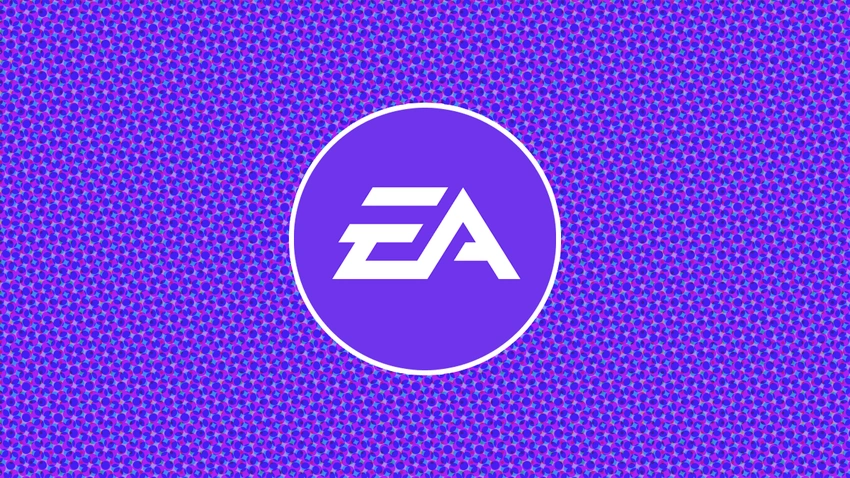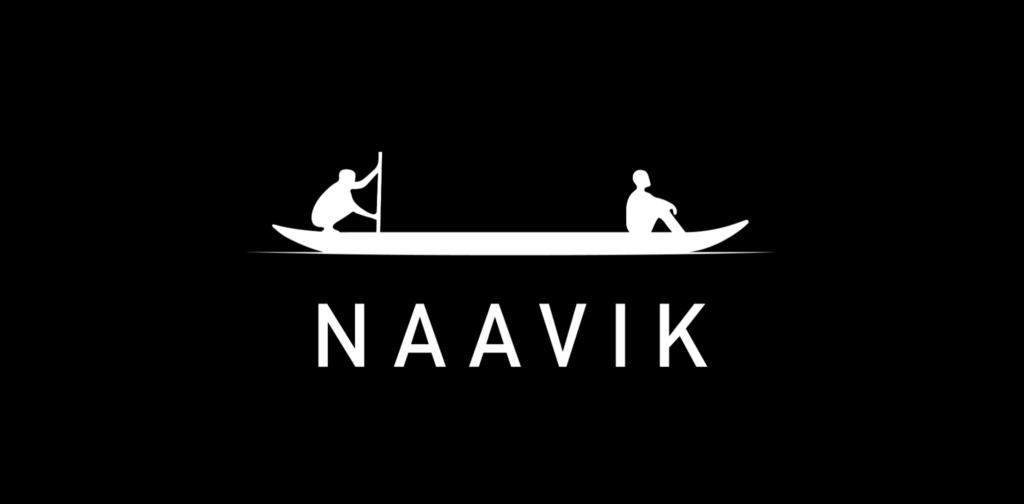Hi Everyone. Welcome to another issue of Naavik Digest! If you missed our last one, be sure to check out our dive into Embracer Group’s most recent earnings. This issue, we’re discussing Sony’s major live service push and the risks it poses when compared to its tried-and-true single-player strategy.
Sony’s Showcase / Capcom’s Resurgence / NVIDIA’s AI Demo
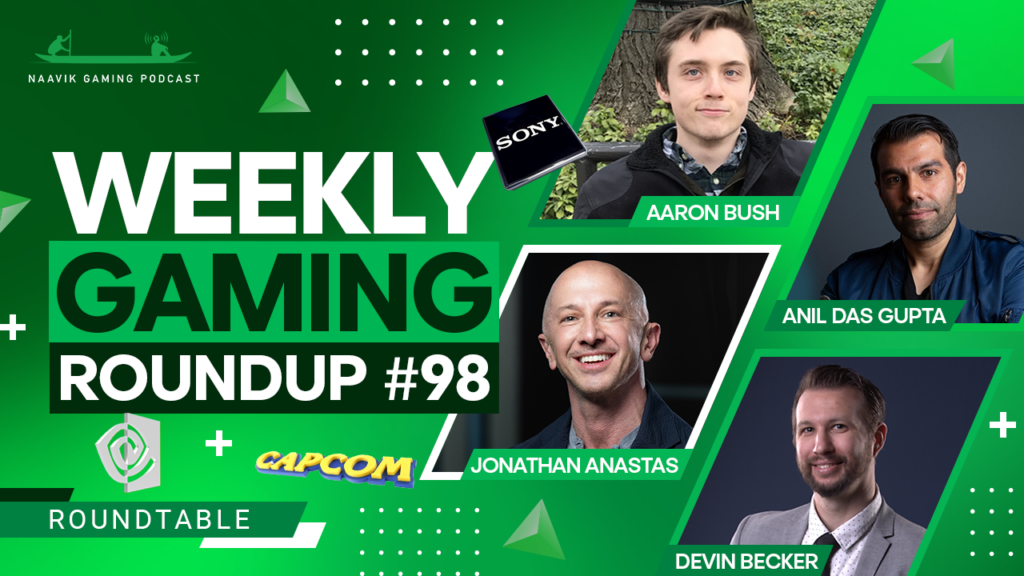
The Roundtable crew walks through the highlights of the latest PlayStation Showcase, which included all sorts of new exclusives, non-exclusives, PSVR 2 games, and a growing emphasis on live service projects. We also try to explain Capcom's major resurgence, CD Projekt's changing priorities, and whether Naughty Dog's The Last of Us multiplayer game delay may actually lead to a cancellation. And, lastly, the team wraps up with a discussion about Nvidia's latest AI NPC demo and just how much of it is substance or sizzle. Join us for all the latest games business news with Anil Das-Gupta, Aaron Bush, Jonathan Anastas, and host Devin Becker.
You can find us on YouTube, Spotify, Apple Podcasts, Google Podcasts, our website, or anywhere else you listen to podcasts. Also, remember to shoot us any questions here.
#1 Sony’s Live Service Gamble
Written by Nick Statt, Naavik Managing Editor

Sony is aggressively expanding into live service gaming, and this strategy was on full display during its first PlayStation Showcase event since September 2021. Of the four first-party PlayStation games shown during the event late last month, just one of them, Insomniac Games’ Spider-Man 2, was a classic single-player Sony experience.
The other three — Haven’s Fairgame$, Firewalk’s Concord, and Bungie’s Marathon — were all fresh IPs from newly acquired studios. These games, among others in the pipeline, represent Sony’s ambitious plan to have 12 live service titles in its portfolio that represent close to two-thirds of its first-party development budget by 2025. Yet many fans found the focus on multiplayer and live service games, especially those that will also launch on PC and Xbox, disappointing. The disconnect underscores the uphill battle Sony faces in trying to experiment with GaaS business models while maintaining its reputation for cohesive, high-quality, and (mostly) solo experiences.
Sony is trying to adapt to the times, which means investing in free-to-play and cross-platform experiences that can evolve — and monetize — over many months and years. But at the same time, investing heavily in trying to develop its own live service games, which necessarily means diverting resources away from other projects, represents a real risk to Sony’s business. Until now, PlayStation has thrived on offering a best-in-class brand of narrative-driven single-player products exclusive to its console platform. That, in turn, has helped Sony maintain a console market lead, which means it reaps the rewards from successful live service hits like Fortnite and Call of Duty: Warzone. It is no surprise that Sony has invested close to $1.5 billion in Fortnite maker Epic Games.
But while Sony is adept at selling tens of millions of copies of games like God of War and Spider-Man, it has much less experience competing with live service giants, like Fortnite, that continue to generate massive revenue for the PlayStation platform. That is precisely why Sony brought Destiny developer Bungie into the fold to help it navigate this transition. As game analyst Benji-Sales put it best on Twitter, “live service titles [are] actually more inherently risky than single-player games,” and this is especially true for a company with a track record like Sony’s. “Publishers hear the siren call of Fortnite, but be careful not to sink.”
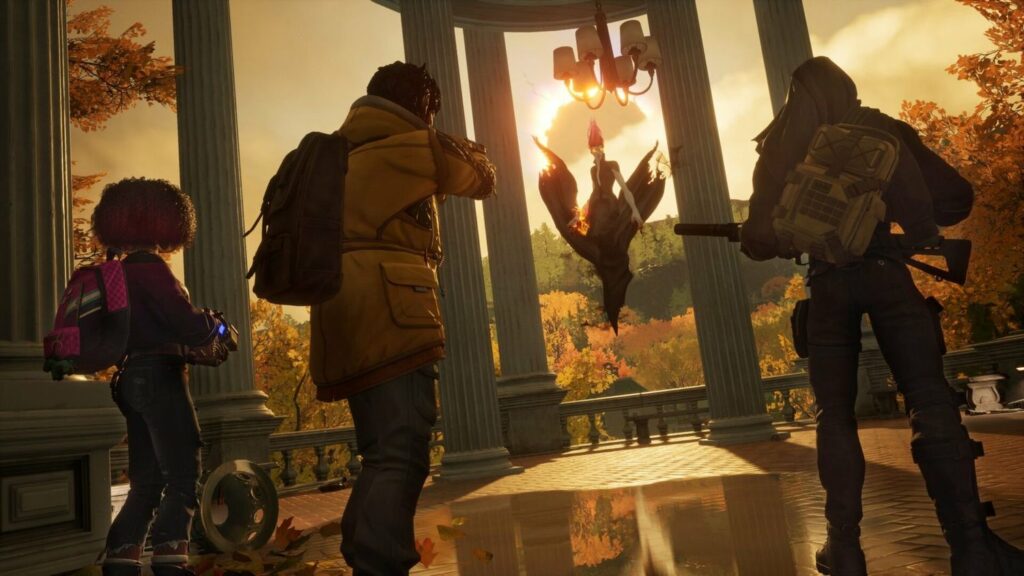
Avoiding Redfall
Sony’s primary concern here is not falling into the same trap as high-profile live service misfires like Square Enix’s Avengers, Electronic Arts’ Anthem, and, more recently, Microsoft’s Redfall. In those cases, and many more, studios with a track record of building stellar single-player experiences instead tried their hand at live service gaming by following industry trends and the trail of lucrative microtransaction revenue. We have early evidence that Sony is already expressing caution on this front with its decision to scale back Naughty Dog’s upcoming The Last of Us multiplayer spinoff over concerns about its live service strategy.
And that’s for good reason — when live service games fail, they fail hard and publicly. Avengers didn’t arrive fully baked, and its post-launch roadmap didn’t inspire players to stick around. Eventually, Square Enix sold off developer Crystal Dynamics to Embracer Group last August and the Avengers team ceased providing ongoing development and support to the game at the end of March. The situation was similar for Anthem, which tried and failed (like Avengers) to clone Bungie’s Destiny formula. But Anthem suffered from a lack of meaningful content and engagement hooks. BioWare tried a lengthy rebooting process, yet it ultimately decided to move on to other projects in 2021 and is now back to doing what it does best: developing new Dragon Age and Mass Effect titles.
Redfall suffered from the same live service struggles as Avengers, Anthem, Halo Infinite, and so many other games before it. According to a new report from Bloomberg this week, developers at Arkane Austin were skeptical about developing a multiplayer game with live service-style monetization, but studio leadership forged ahead after the company’s commercial flop Prey failed to find a broad audience. When Microsoft bought Arkane parent company ZeniMax in 2020, some members of the Redfall team harbored hope Microsoft might even cancel the game because of how directionless, buggy, and unfinished it felt. Instead, Microsoft took a hands-off approach and marketed the game as a major first-party Game Pass exclusive.
Making matters worse, more than 70% of the team that worked on Prey had left the Redfall project by the end of its development, Bloomberg reported. “In the end, Redfall never coalesced. Several people who played the game in 2021 were shocked to see how little ultimately changed,” the report stated. “The final glitchy product felt to some critics like a poor compromise between single-player and multiplayer ideas that failed to please fans of either type of game.”

Are Live Service Games Zero Sum?
We don’t have enough information about Sony’s live service roadmap to say definitively whether its major first-party push will likely succeed or fall flat. But there is still the very real challenge of trying to strike gold in the increasingly competitive GaaS marketplace. This is best summed up with a question posed by GameDiscoverCo’s Simon Carless in his newsletter this week: are live service games zero sum?
In other words, “do you have to steal groups of players away from another game they are ‘maining’ to get them to play new live service games?” Carless wrote. This is a question that’s plagued the entire live service trend since the launch of Fortnite and the popularization of the battle royale genre.
Nowadays, every game requires a battle pass in addition to a robust post-launch roadmap, including a seasonal content model and a well-executed microtransaction strategy. This is all table stakes to have even a hope of staying alive long enough to succeed, let alone generate revenue on the scale of games like Apex Legends, Valorant, and Warzone.
Even with so many studios pulling off this tricky balancing act, we still saw a live service bloodbath earlier this year as more than a half-dozen once-promising GaaS titles all hit the wall, in part because they couldn’t monetize, grow, or retain players at the level needed to keep going. That includes EA’s Apex Legends Mobile, Velan Studios’ Knockout City, Iron Galaxy’s Rumbleverse, and Player First Games’ MultiVersus. (MultiVersus is still in active development, but it was removed from storefronts while the team reworks it for a 1.0 launch sometime next year.)
One key problem is, as Carless pointed out, the increasing demand for attention any one service game imposes on its player base. “Single player games are 10, 30, even 100 hours for Zelda [and] you're done,” wrote journalist Paul Tassi, who has devoted years writing about and playing GaaS games like Destiny 2. “Live service wants your endless devotion for months, years, and no one has time for more than one to two of those at a time, if even that.”

To its credit, PlayStation Studios seems well aware of the tightrope it's walking and how much due diligence is required to avoid high-profile flops. “Historically, our games always worked towards an end, and this is a large cultural shift [with live services]… the launch of a game is just the beginning, and it comes with a whole set of different [key performance indicators],” PlayStation Studios chief Hermen Hulst said during a business webcast following Sony’s earnings report last month.
On the same call, SIE CEO Jim Ryan sung the praises of Bungie and how the Destiny developer was now helping it evaluate live service projects. “We have been working with Bungie for almost a year, and the learnings in both directions have been very significant,” Ryan said. “They surpassed my expectations and equally, I think Bungie is extremely excited by what they can take from SIE in terms of market reach, marketing, collaboration, and the ability to amplify their IP.”
Hulst echoed the sentiment. “The learnings from Bungie have been very substantial in many areas. Of course, when you’re developing live service titles, you [require] capabilities that you don’t have when you’re working on single-player, narrative-driven games,” he said. “And these capabilities that we’ve set up inside PlayStation Studios have been helped and guided by Bungie… We also work with Bungie on a pretty rigorous portfolio review process that we apply to all 12 live service titles that we have in production.”
Notably, Sony-backed studio Deviation Games, which has a publishing deal with PlayStation to develop a live service title, was hit with a round of layoffs last month. Additionally, Bloomberg reported last week that Bungie did have a hand in Sony’s decision to scale back The Last of Us multiplayer project after the Destiny studio raised concerns about its long-term engagement potential. These stories are good signs for Sony in that they illustrate the company’s prudent approach and its willingness not to over-invest in projects that show signs of weakness.
One silver lining for PlayStation is that the teams it has invested in for arguably its most high-profile projects aren’t pivoting away from a tried-and-true approach, as BioWare, Crystal Dynamics, and Arkane did. Haven and Firewalk are new studios, yet staffed with veteran talent and not weighed down by player expectations. And Bungie’s Marathon, if it’s anything like Destiny, will have a robust live service roadmap ahead of it.
No amount of Bungie expertise will allow Sony to see the future, and some of its live service games and those of its partners — specifically looking at titles like Square Enix’s Foamstars — could very well fail. The free-to-play, cross-platform audience of today is much more fickle than the console-centric one of yesterday, and Sony’s major gamble on what it sees as the future of gaming is full of potential pitfalls.
That’s not to say that Haven or Firewalk’s new projects won’t be hits, or that Bungie’s Marathon doesn’t have all the ingredients of another Destiny-level home run. Sony also has a number of benefits going for it that its competitors do not enjoy. Even moderate success on a Sony first-party GaaS title means the company keeps 100% of the revenue, rather than splitting it with Activision, Epic, and the many third-party live service partners it’s aided as a platform owner until now.
Additionally, a major live service hit could become a serious system seller, helping fuel Sony’s PS5 ecosystem approach and further preventing Xbox from chipping away at its lead with Game Pass and, potentially, the portfolio of Activision Blizzard. It’s also easy to see that Sony’s primary first-party audience is there for the bread-and-butter single-player games. Expanding that audience to more devout multiplayer or free-to-play gamers might only be additive for the PlayStation business, rather than creating a situation in which players of one Sony game have to give up playing another just to make time for it.
The reality is that Sony will likely fall somewhere in the middle, with some genuine successes and a few failures. Making live service games is exceedingly difficult and expensive, and not everything works out of the gate. In the case of Bungie, Destiny and its sequel went through countless changes in direction and formula until the studio had mastered the game’s seasonal model. And yet even now — almost 10 years later — the Destiny series is still evolving with each new expansion. So perhaps the most important lesson Sony should learn from Bungie is when not to give up on a live service game before its true potential is reached.
#2 Meta’s New Quest, CD Projekt’s Future Priorities, Capcom’s Resurgence & Nvidia’s AI NPC Demo
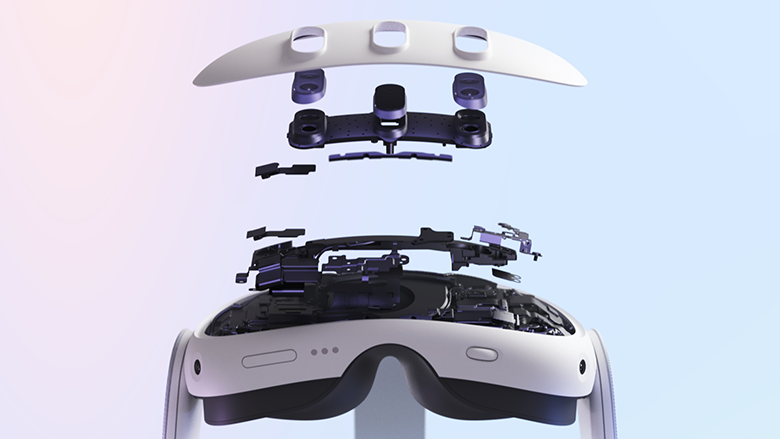
Meta’s next Quest is here. Mark Zuckerberg is far from giving up on the metaverse, despite the tech industry’s hard pivot to all things generative AI. On Thursday, Meta officially announced the Quest 3 headset after teasing its arrival and giving select press outlets a hands-on opportunity last month. The new device, priced at $499.99, has an improved and thinner design with a next-gen Qualcomm chipset for “twice the graphics performance.” It supports backward compatibility with the Quest 2 library, a big win for Meta considering that’s one of the biggest downsides of Sony’s new PSVR 2. Of course, the timing here is not coincidental. Next week, Apple is expected to finally take the wraps off its long-awaited mixed reality headset. While the Quest 3 is still being pitched as a wireless VR gaming device, it does have superior passthrough capabilities that may help it compete in the mixed reality arena with Apple’s developer-focused device, which is rumored to cost six times as much at around $3,000. Meta also held a gaming showcase where it unveiled new exclusive Asgard’s Wrath 2 and a Vampire: The Masquerade VR title, among other new games. The metaverse may not be as exciting (or presently as useful) as ChatGPT, but what it definitely does need to succeed is better hardware, and it’s nice to see Meta continue to iterate on that front.
CD Projekt’s development focus highlights its future priorities. In Q1, CD Projekt recorded a 19% revenue decline, although profits held steady at a nice 39% margin. Of course, the quarterly ebbs and flows of these numbers don’t paint the proper picture for a company with spaced-out mega-releases, so it’s instead important to look at where development talent is focused. Compared to last year, the CD Projekt team has heavily reduced development on Cyberpunk 2077 support, Gwent (which is scheduled for shutdown by the end of the year), and The Witcher: Monster Slayer (a mobile AR game also shutting down). Meanwhile, development on Cyberpunk 2077’s Phantom Liberty expansion is the No. 1 priority, work on the new single-player Witcher game is ramping up, and there’s even a multiplayer Witcher game in the works too. We’re hesitant about the multiplayer Witcher game, but expect the next mainline Witcher game to be a major success — especially given The Witcher 3 just surpassed the 50 million units sold milestone. Furthermore, the future of Cyberpunk 2077 as an IP CD Projekt can rely on is largely up to the performance of Phantom Liberty, which will launch in the coming months. We’ll learn more about that project during Summer Game Fest, but in the meantime CD Projekt is laying off several staff members on projects that are winding down while CEO Adam Kicinski fights off rumors that the company is for sale.
Capcom is at the top of its game. Did you know that Capcom has been one of the top-performing game companies of the past decade? After several misses, Capcom’s leadership made a slew of changes across the 2010s — bringing development back in-house in Japan, launching a new game engine, unlocking global audiences, creating high-quality remakes, etc. — that led to a long-term resurgence in the business. Even recently, not only did the March release of Resident Evil 4 Remake earn a 93 on Metacritic (making it the second fastest-selling installment in the series), but the brand new Street Fighter VI, which pushes a refreshing open world take on the franchise, is rocking a strong 92 Metacritic score as well. It’s then unsurprising to see Capcom sport 14% growth in sales over last year while boasting high profits and a consistent dividend. To learn more about Capcom’s turnaround and recent successes, make sure to listen to this week’s Roundtable episode.
Nvidia steps into the AI NPC ring. Nvidia recently built and showcased a demo of its Avatar Cloud Engine for Games. In the demo, the narrator talks to the NPC owner of an in-game ramen shop, which was fed information about its environment to inform its speech. What’s new and special here isn’t the NPC’s dialogue per se, but rather the fact that an NPC is reacting to real language — being actually spoken to. It’s fair to have some skepticisms — why is the demo so short, when could we actually see this in a real game, how to keep AI NPCs from going too off-script, and whether Nvidia’s engine is the best tool for AI NPCs. Yet this demo is another directional example of where NPCs could go in the future thanks to generative AI. In-game characters that are more naturally reactive and understanding poses significant upside for player engagement, personalization, and unlocking a wider creative surface area.
In Other News…
💸 Funding & Acquisitions:
- Openfort raises $3M for web3 gaming wallet infrastructure. Link
📊 Business:
- Kotick blamed Activision scandals on "a very aggressive labor movement.” Link
- Former CD Projekt Red developers founded new studio Blank. Link
- Meta announced its Quest 3 VR headset, which will cost $499.99. Link
- PSVR 2 sold just shy of 600,000 units in six weeks. Link
🕹 Culture & Games:
- Epic detailed new creator payouts under Fortnite Creative 2.0. Link
- The Last of Us multiplayer isn’t coming any time soon. Link
- The Mario movie is now the second-biggest animated film ever. Link
👾 Miscellaneous Musings:
- Inside the making of Redfall, Xbox’s latest misfire. Link
- Investigation: Who’s telling the truth about Disco Elysium? Link
- Welcome to the trillion-dollar club, Nvidia. Link
🔥Featured Jobs
- Coda Payments: Managing Director, Publisher Partnerships (Los Angeles, U.S. / Hybrid)
- FunPlus: Senior Community Manager (Barcelona, Spain / Remote)
- LILA Games: Lead Gameplay Engineer (Remote)
- MY.GAMES: Game Designer (Remote)
- Supersocial: Game Designer (Remote)
You can view our entire job board — all of the open roles, as well as the ability t
o post new roles — below. We've made the job board free for a limited period, so as to help the industry during this period of layoffs. Every job post garners ~50K impressions over the 45-day time period.

